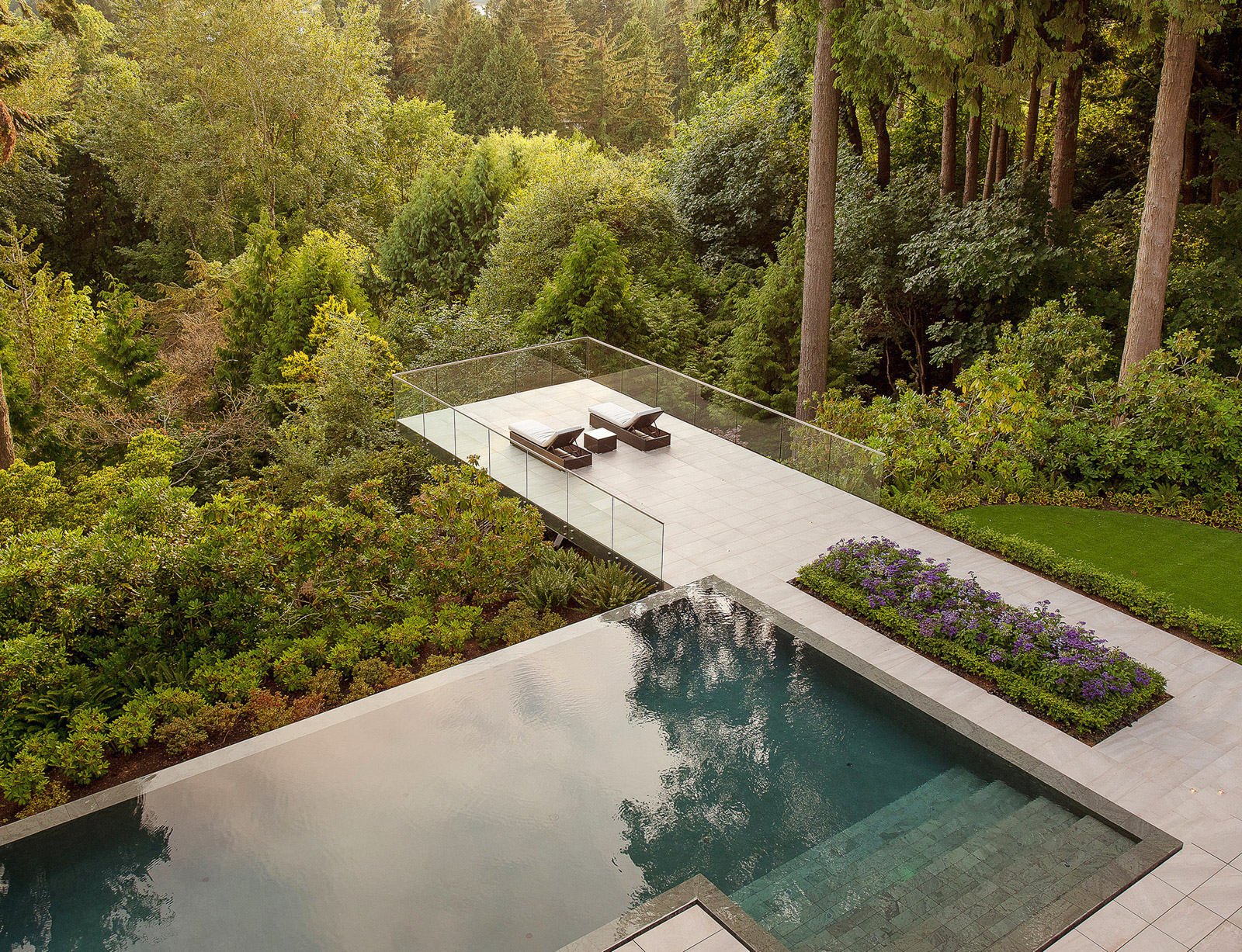Flick a switch and transparent panels gently slide open, expanding the interior living space to include an intimate furnished garden. Among the flora, a copper sculpture embellishes an otherwise forgotten nook, art gilding the greenery. People move seamlessly back and forth between house and yard. Vegetation becomes the walls of the home, and carefully positioned outdoor lighting dots the landscape, extending views into the night. Boundaries are blurred; outside becomes part of inside, inside part of out.
The trend of blending indoor and outdoor living—popular in climates with year-round warmth—accelerated on the West Coast during 2020, says Paul Sangha, founder and principal of Vancouver’s Paul Sangha Creative, an award-winning landscape architecture practice.
“The ability to extend how you use your space is a huge movement,” he explains. “How you move inside and outside seamlessly and effortlessly.”
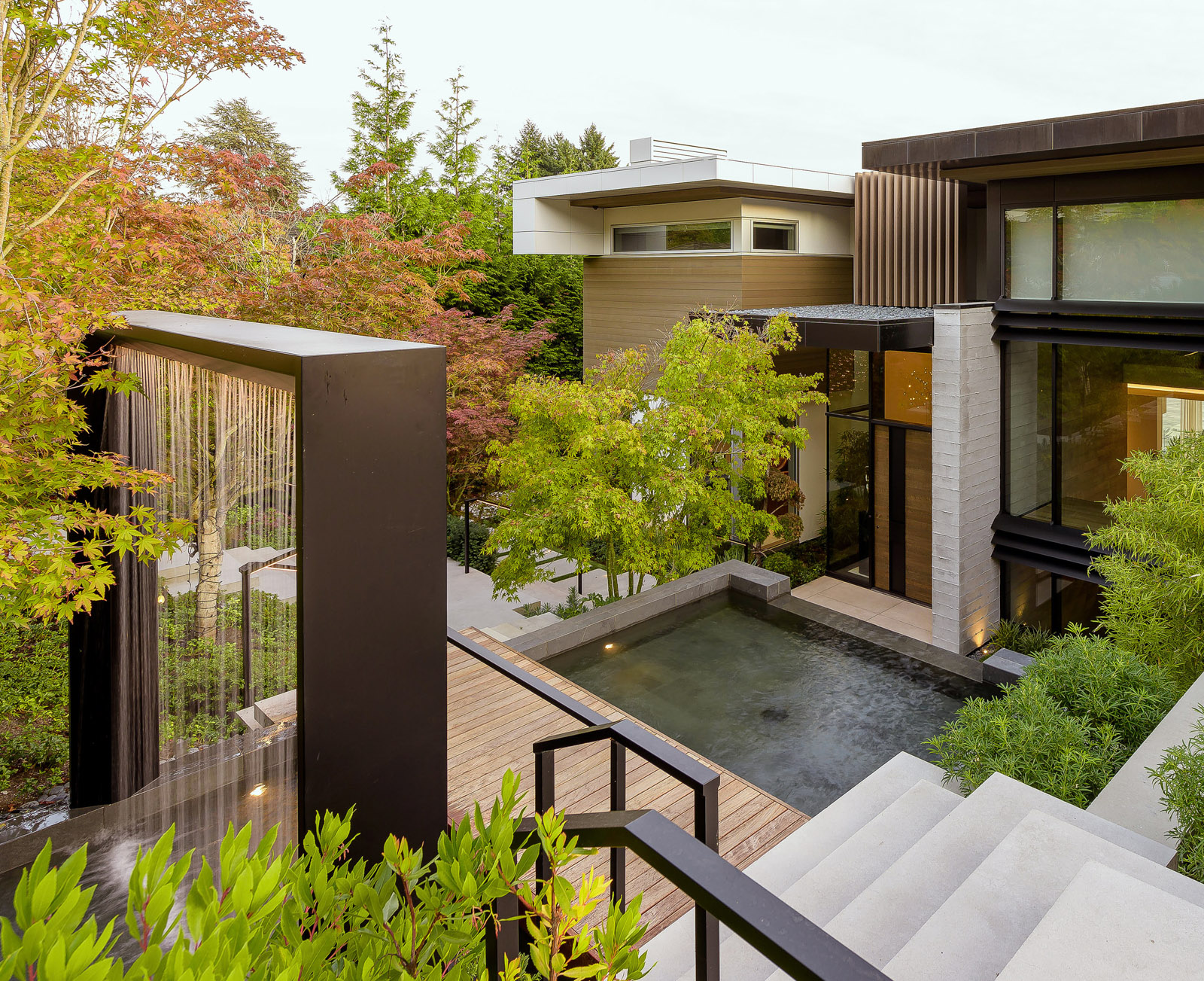
Waterfalls animate an entry garden.
Once the lockdown hit, Sangha and his team of 16 noticed business starting to increase, with clients coming from within B.C. as well as out of province and as far away as the Netherlands. As people set aside their wanderlust and moved their offices into the home, they shifted their focus to their surroundings, contemplating ways to better use the land and embellish their environs. They sought to transform their properties into a paradise escape.
“Your desire to have more elbow room starts to exist when you have to be confined,” Sangha observes. “You ask, how can I utilize this space but have it beautiful year-round?
“If you’re in a condominium, the use of the patio makes a big difference. If you’re in a house, the use of a garden makes a big difference,” Sangha says. “Even in extreme climates like Whistler, clients are looking to work with the landscape architect to create covered outdoor spaces with heaters.”
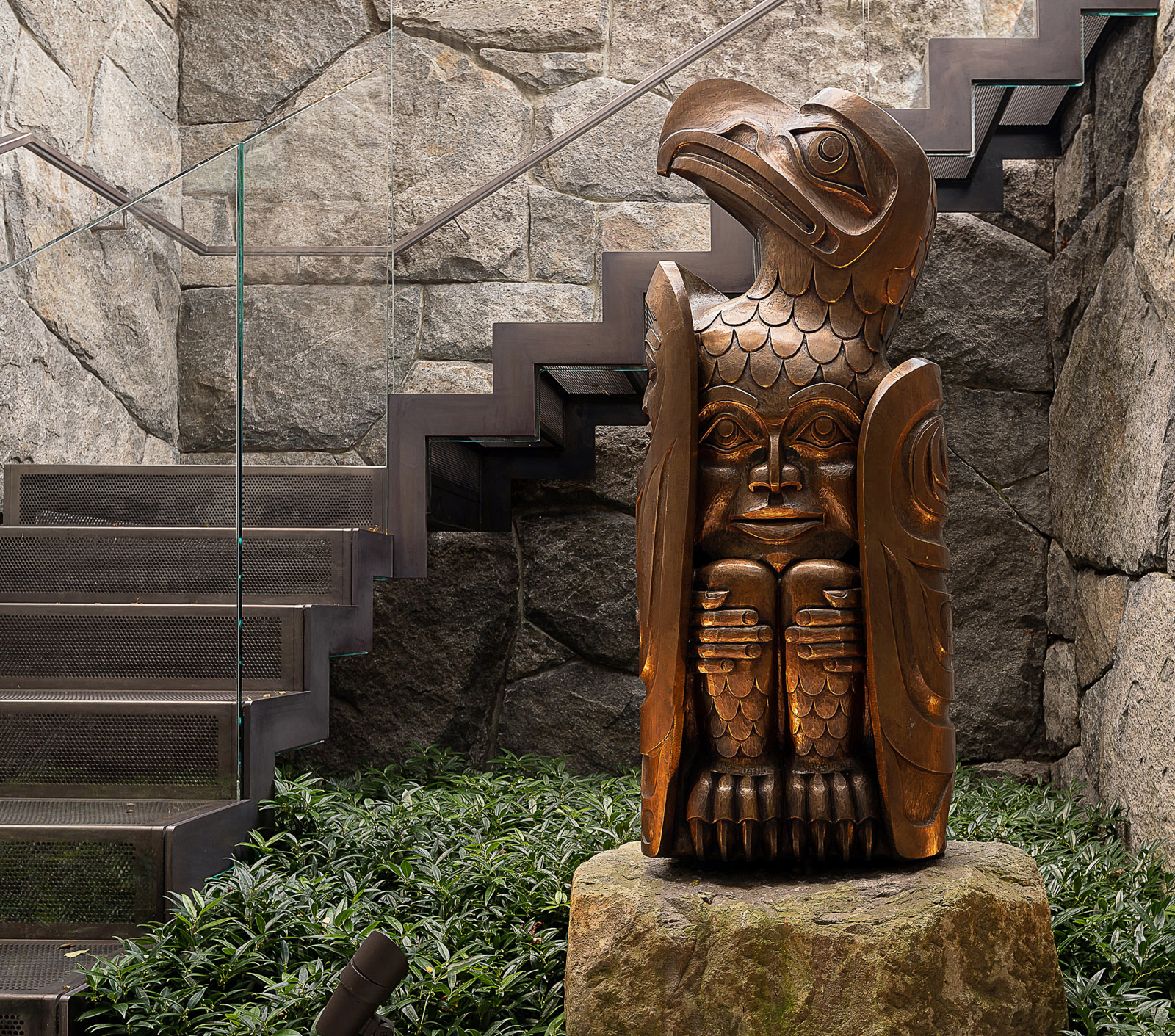
A sculpture garden includes works by Bradley Hunt on the lower level.
For larger projects, Sangha might work with contractors to install a glass-wall system, extending views of calming natural scenery and encouraging homeowners to experience the garden as part of their available living area. On a smaller scale, he might design a patio that’s level with the floor inside, leading clients to perceive interior and exterior as one fluid space without a physical barrier at the threshold.
The drive to blur the borders between inside and outside reflects broader trends in our way of thinking, Sangha explains. For example, the world quickly adapted to working from home during the pandemic. “That same thinking has rolled into other aspects of our life,” he adds, thoughtfully.
“Why do we have to do things in a particular way, like we did before, when everything else is changing rapidly? Why does a vegetable garden have to be one use? Why does the patio only get used for one particular thing? Why isn’t the indoors part of the outdoors?
“We’re liberating how we look at the world, how we use space, how we think about each other.”
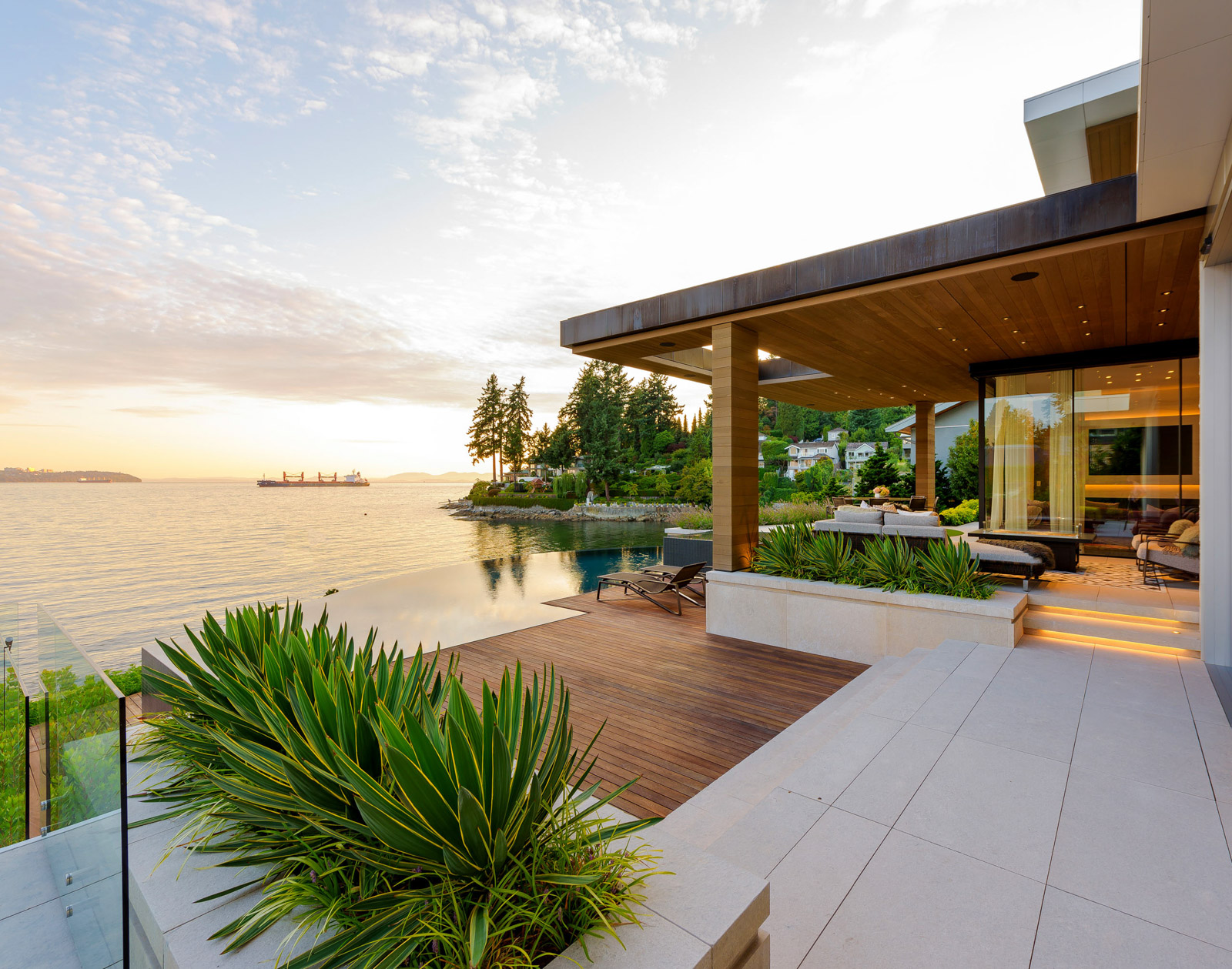
Covered outdoor seating overlooks the pool and ocean.
Prior to COVID-19, Sangha says 30 to 40 per cent of clients asked for raised vegetable gardens to be incorporated into landscape design. Since the pandemic, that number has jumped to 90 per cent. “I almost started calling them COVID gardens,” he laughs.
“If you can be even remotely self-sustaining, whether it’s berries or produce, you feel like you’ve nurtured something,” he explains. “There’s great healing in being able to grow your own food.”
Sangha notes another trend on the rise: vegetables are being grown among the flowers in ornamental gardens not, as has long been tradition, in their own separate space. Kale among the marigolds. It’s another way Sangha sees boundaries being blurred. “In a lot of people’s minds, the food garden is separate from the visual garden,” he says. “People are now open to the thought that the two can be combined, especially when space is limited. You can integrate your visual and consumable garden.”
And, as people beautify their land, they also become open to adorning the garden with artwork.
“The paintings and sculptures you put inside your house are the items that personalize space. That realization is transferring to the outside,” Sangha suggests. “It’s the artwork and the furnishings that give the character that is unique to who you are and how you live.”
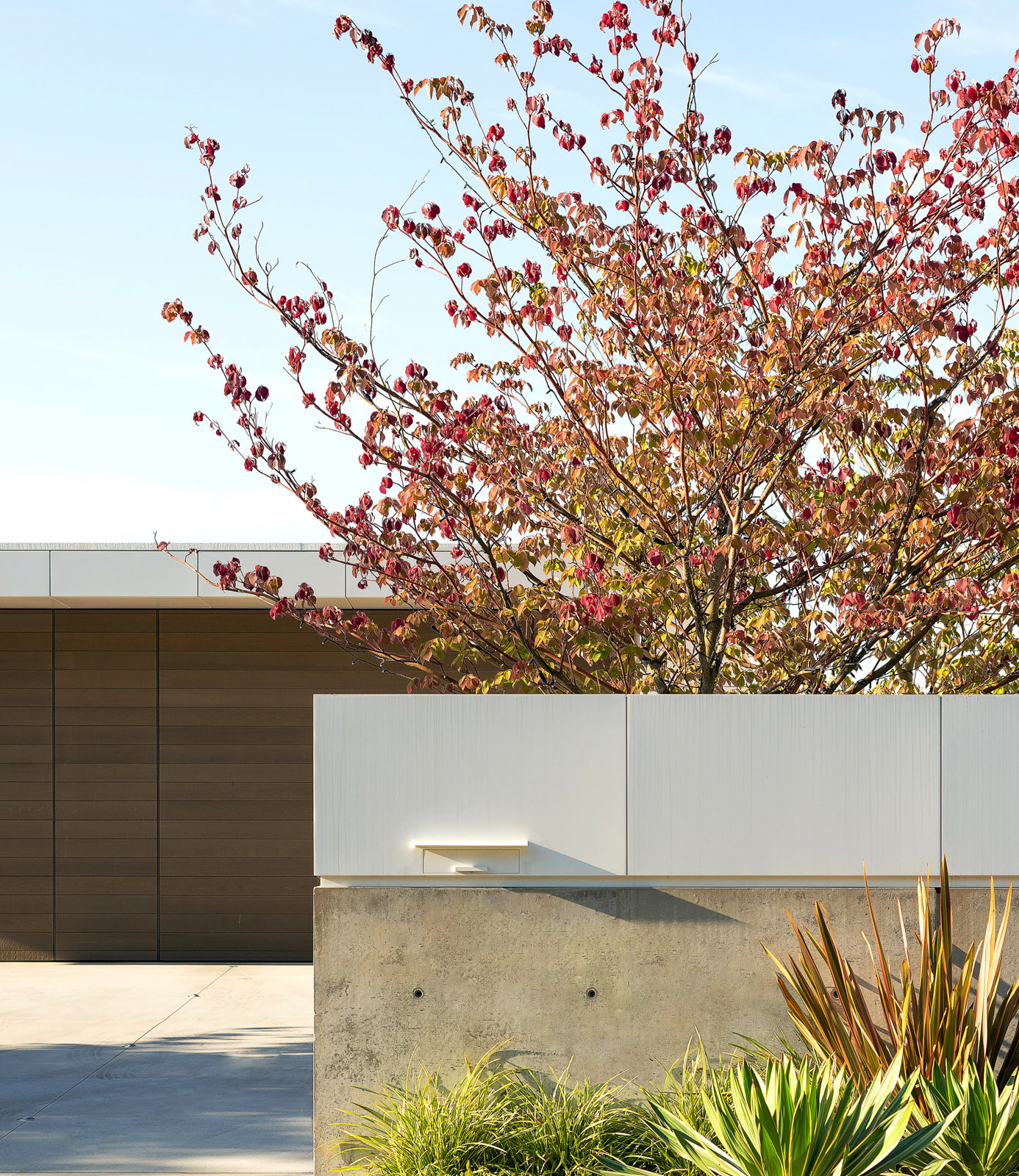
Textural plantings and a kousa dogwood mark the driveway entrance.
One house he worked on recently, a project called Sculpture Garden, saw Sangha’s firm excavate areas of the property to allow more light to brighten the lower level of the home. The team, led by landscape architect Vikas Tanwar, placed artwork in newly created pockets of space outdoors. At one time, these areas might have been seen as left over and unworkable. Instead, Paul Sangha Creative transformed them into an outdoor gallery. Now, passersby come across art unexpectedly in Sculpture Garden’s hidden corners, the design encouraging quiet moments of contemplation and imagination.
With art, Sangha says, you can “blur the lines between what is pedestrian space, car space, green space, and interior space so that the differences between them are very subtle.”
Reflecting on client conversations before and during the pandemic, Sangha noticed a shift in the approach people are taking to their landscaping projects. The discussion, he observes, has changed from what he often heard previously—questions about resale value and curb appeal—and instead now centres on the heart of the matter: the family’s needs. “Family has grown in importance,” he says, adding that clients are approaching their outdoor landscaping as a legacy project, something to inspire unforgettable moments together for years to come.
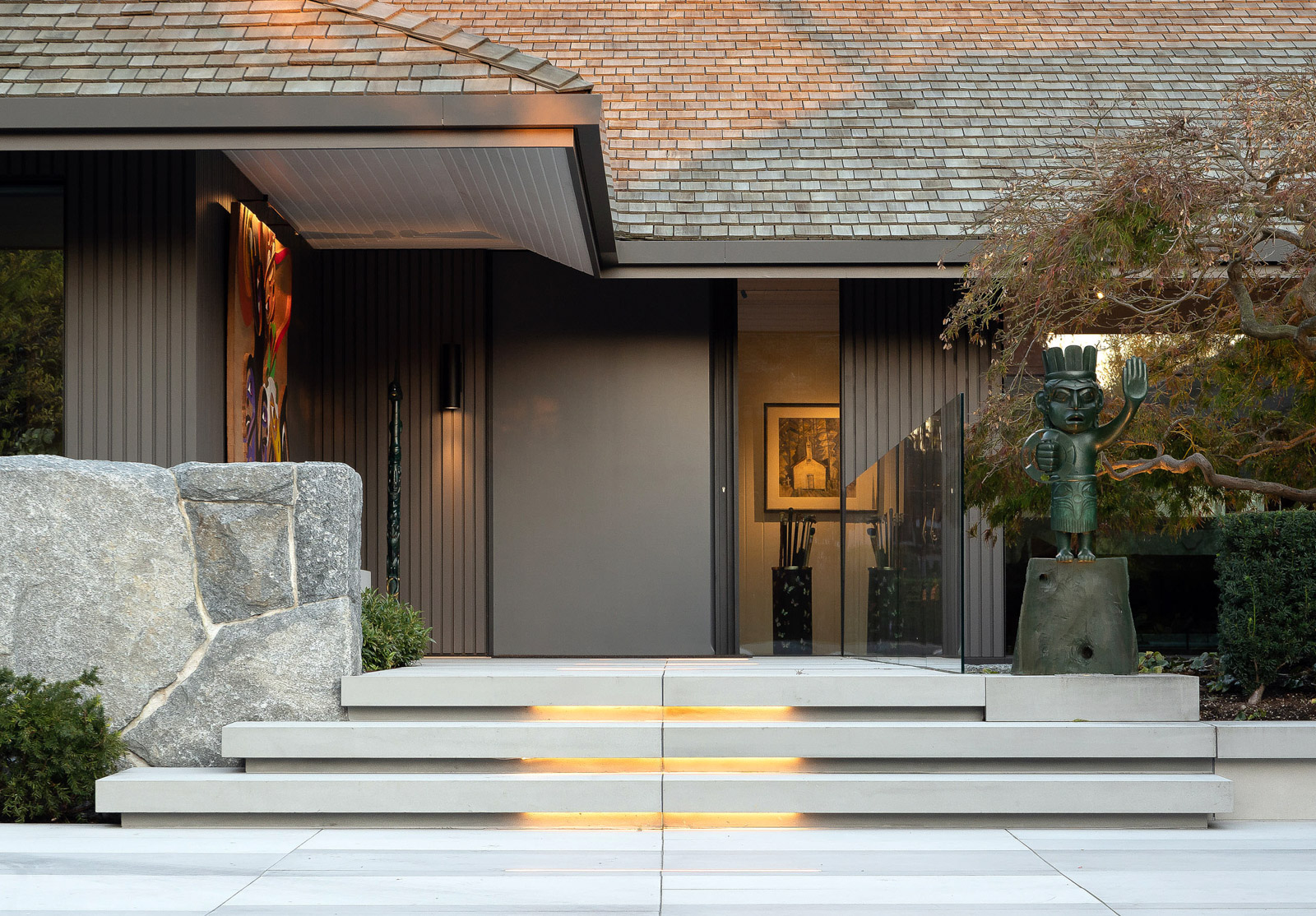
The sculpture garden’s upper level by the front entrance includes works by Jim Hart.
That kind of legacy is possible even for small projects, he says. “It’s almost the smaller the area, the more focus has to go into the detail and consideration of space to maximize it. It could be that you’re just doing a kitchen or dining renovation, but how does it work with your outdoor eating area? Your sitting area? What about your views outside, the light conditions?”
“Connecting with nature has become more and more important,” he notes. “If there’s an opportunity to create conditions for enjoyment outdoors, people are opting to go in that direction.
“It’s the idyllic aspect of West Coast living: the glass is the only separation between you connecting with nature.”
Read Sangha’s tips for designing beautiful West Coast landscapes in this supplemental. This story from our Spring 2021 issue was first published on Mar 18, 2021. Read more Design stories.

